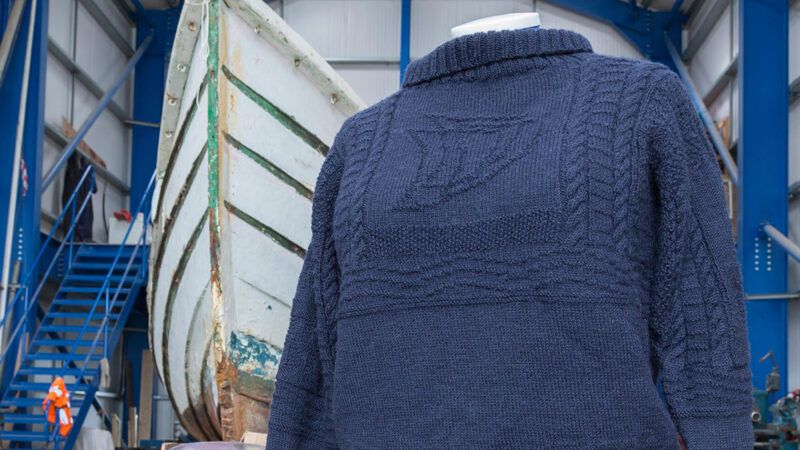Modern Crafters Rediscover an Old Sweater
Knitting's evolution from necessity to leisure activity is a testament to economic progress.

Young people have been picking up fiber arts such as knitting in recent years, spurred by social media trends and pandemic-era boredom. Knitting forums now feature young crafters not just rediscovering traditional patterns but reinventing them for modern times.
Take the gansey sweater, a staple of 19th century British fishing communities—once a symbol of practicality and hard work, now the inspiration for numerous popular and fashionable knitting patterns. The gansey was a product of industrialization and exchange, the very things that grant modern knitters the leisure time to create this garment for pleasure rather than practicality.
Traditional ganseys were knitted with a strong wool yarn to produce a very tight and dense fabric. These factors helped keep "the wearer warm in the face of the coldest days," noted Di Gilpin, co-author of The Gansey Knitting Sourcebook, in an interview with Nomadic Knits. Certain design techniques—such as leaving the more damage-prone lower half of the sweater plain and easy to remove—were used to allow ganseys to be easily repaired.
But ganseys were more than just practical garments, Gilpin argued: "The Gansey, in all its complexity and beauty, represents the harmony between the utilitarian and art." Relief patterns representing ropes and anchors nodded to the seafarers who wore them, and knitters added their own creative touches stemming from their family or geographic backgrounds.
"The kind of wool needed to make relief patterns stand out," as on gansey sweaters, "is fine, machine spun worsted," explained knitting writer Penelope Hemingway on her blog, The Knitting Genie. By that virtue, the development of the sweater was made possible by industrialization, which expanded material options beyond just hand-spun yarn.
Its motifs, too, were a direct function of movement and exchange. "Fishing families were almost the only truly mobile section of society," wrote Hemingway. "The same patterns might crop up in Scotland, Yorkshire, Norfolk, and Cornwall." Some gansey designs in England appeared to be influenced by those in the Netherlands, Hemingway added.
Knitting a gansey sweater is a long and repetitive process. People once made the sweaters for eminently practical reasons as they were specifically well-suited to the needs of the coastal working class. But these days, knitting is an impractical hobby. It might take even an experienced crafter several weeks to create something that just a few hours' worth of pay and a trip to a clothing store could yield.
Over the past several decades, workers in developed countries have come to experience more leisure time and less time on the job. This is exactly why modern crafters can afford to take on an antiquated hobby such as knitting. The symbols that modern knitters work into their gansey sweaters may no longer be connected to their original meanings, and the materials and techniques may have changed, but their rediscovery is a continuation of the progress and prosperity that helped create them in the first place.


Show Comments (33)